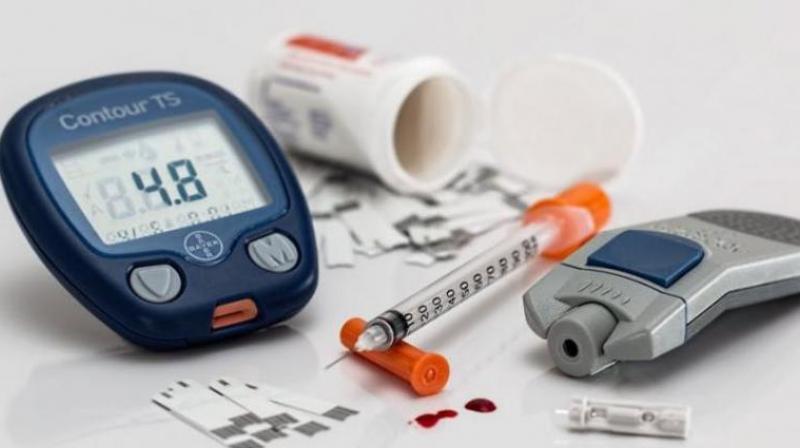Type 1 diabetes wrongly diagnosed, hits adults too
In a Type 1 diabetes case recently detected in the UK, that of its Prime Minister Theresa May.

Hyderabad: A common understanding up till now about Type 1 diabetes or juvenile diabetes was that it affects only children or teenagers and adults are immune to it. This belief seems to have been dispelled recently.
In a Type 1 diabetes case recently detected in the UK, that of its Prime Minister Theresa May, doctors found her developing this form of diabetes at the age of 56.
The case was earlier diagnosed as Type 2 diabetes, but when sugar levels didn’t come under control despite treatment, researchers re-examined the causes and realised that Ms May was affected by Type 1 diabetes. Deeper study into the subject revealed that astonishingly Type 1 diabetes was more common in adults than earlier thought, and as many as 40 per cent of the cases were in fact misdiagnosed as Type 2 diabetes.
In the light of the new development, experts now say misdiagnosis of the disease is not unusual in clinical establishments even in India, for results of tests for urine ketones, blood tests such as C Peptide and certain antibodies like GAD, anti-islet cell antibodies, which help diagnose the condition, can sometimes misdiagnose Type 1 diabetes as Type 2.
Says Dr Ravi Sankar Erukulapati, a consultant endocrinologist at Apollo Hospitals, “If Type 1 diabetes is not identified in time or if it is misdiagnosed as Type 2 diabetes, the patient can suffer dangerous complications and go into a coma due to lack of insulin in the body, leading even to death. It is essential to recognise Type 1 diabetes accurately and treat it with insulin.”
Type 1 diabetes occurs due to autoimmune causes which lead to destruction of beta cells of the pancreas that secrete insulin. It can occur at any age, but it is seen more commonly in children, teenagers and young adults. However, even adults and senior citizens can sometimes develop Type 1 diabetes.
Type 2 diabetes, on the other hand, is resistant to insulin. This means that while the body does produce insulin, its quantity is not sufficient to maintain the blood sugar level because the body is resistant to insulin. This type of diabetes is more common in obese individuals. Dr Sunil Epuri, consultant endocrinologist says, “The treatment for Type 1 DM is insulin oral hypoglycaemic drugs are not used. In Type 2, several oral hypoglycaemic drugs and even insulin are used. In case of Type 1 being misdiagnosed and treated as Type 2, the sugar level won’t come under control and can eventually cause diabetic ketoacidosis, which is a life-threatening emergency.”
Endocrinologists, however, say that the hitch in accurate diagnosis is that there are a lot of subsets of autoimmune disease on the rise like latent autoimmune diabetes of adults that very commonly get misdiagnosed as Type 2 diabetes.
Dr Epuri says, “We need more research in autoimmune diseases because they are present in different forms, and variations are seen despite diagnostic tests being carried out duely. Endocrinologists are coming across a range of cases and we are aware of these tricky situations that are seen at the clinical level.
It requires experience in the field and keen evaluations.

